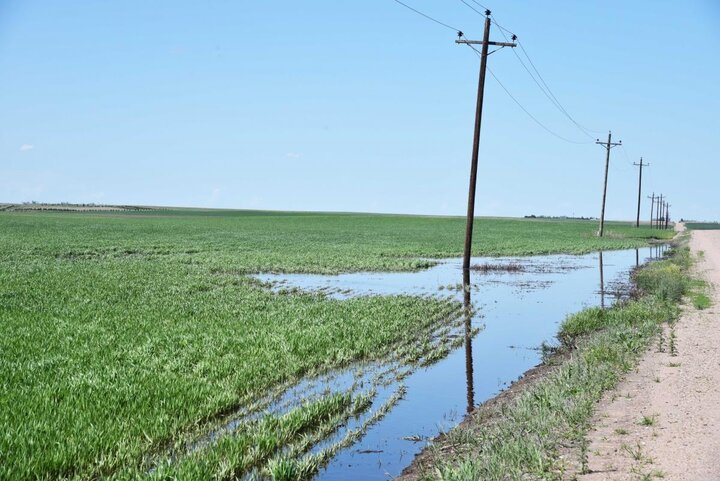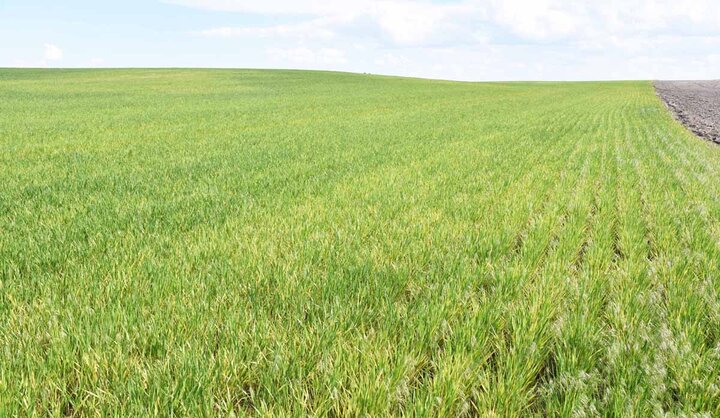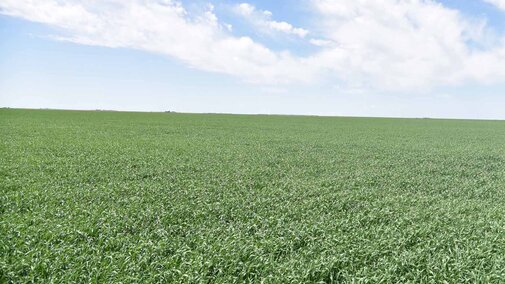On May 15-17, a disease survey was conducted in wheat fields in the west central, southwest, and Panhandle regions of Nebraska. The majority of fields looked green with no diseases (Figure 1). Recent rains (Figure 2) in these parts of the state have alleviated moisture stress in the wheat crop. Wheat in Red Willow County was at the boot growth stage with head emergence just beginning. In west central Nebraska and the Panhandle, wheat was at Feekes 7-8 growth stage (two to three nodes detectable).



In the southern Panhandle the major disease found in several fields was wheat streak mosaic. The affected wheat was mostly volunteer in fields planted with a summer crop such as sunflower during last year’s growing season (Figure 3). At least one field with this year’s wheat crop had a significant level of wheat streak mosaic (Figures 4).
Trace levels of barley yellow dwarf (Figure 5) were observed in one field in the southern Panhandle. In the northern Panhandle, one field had tan spot in the early stages of development (Figure 6).
As of May 14, the farthest north stripe rust has been confirmed is in three counties in southeast Kansas and one county in south central Kansas.

Management
The recent rains coupled with cool nights are favorable to the development of stripe rust. Even though it has not yet been observed in Nebraska, the potential exists for it to develop. Scouting should continue for detection of not only stripe rust but other wheat diseases as well. A fungicide application to control foliar fungal diseases (stripe rust, leaf rust, fungal leaf spots, powdery mildew) should be timed to protect the flag leaf. If there is a late onset of stripe rust or leaf rust and a resistant variety was planted, it may not be necessary to apply a fungicide.
It is too late to control wheat streak mosaic in affected fields this growing season because infections occurred last fall. For the next growing season, wheat streak mosaic can be managed by controlling volunteer wheat. Volunteer that emerges in a wheat field as a result of a preharvest hail storm poses the highest risk if not controlled before planting in the fall. Volunteer wheat in summer crops such as sunflower and corn can pose an equally high risk if not controlled, especially if it is widespread within the field and is in several fields in a given area. All volunteer should be completely dead at least two weeks before planting wheat in the fall.

